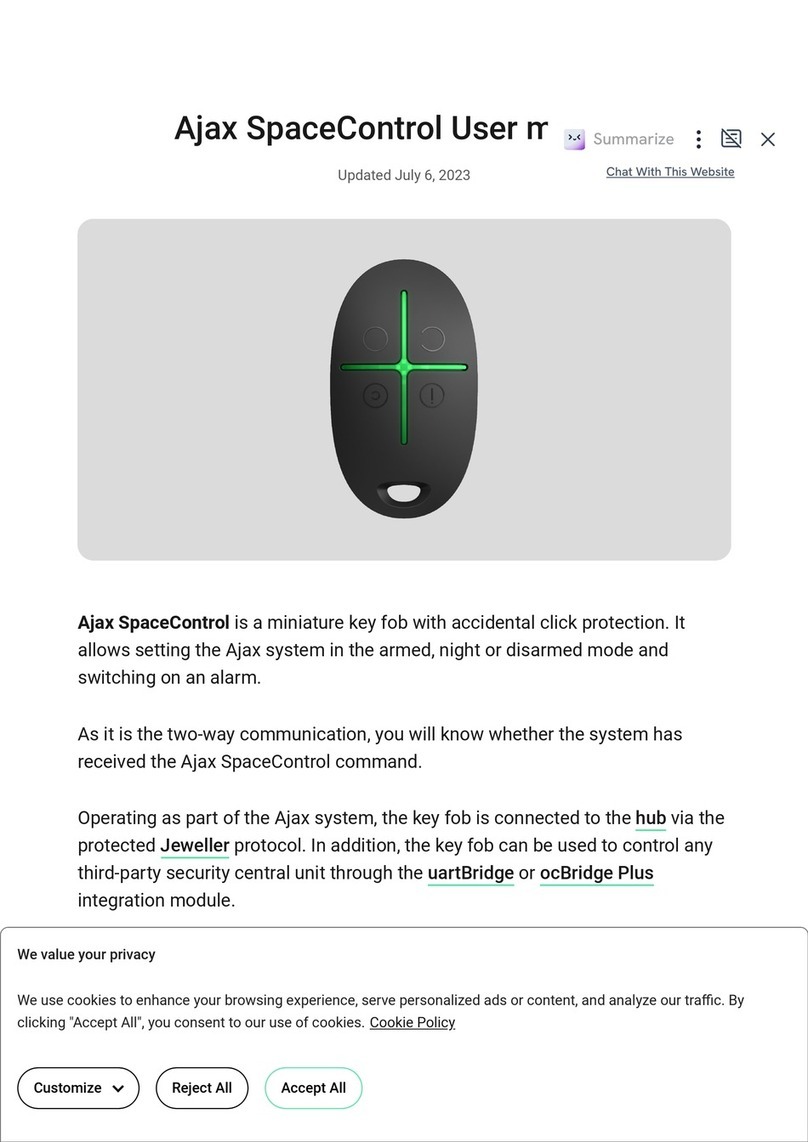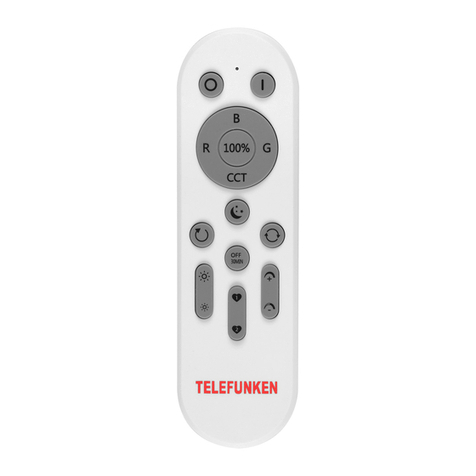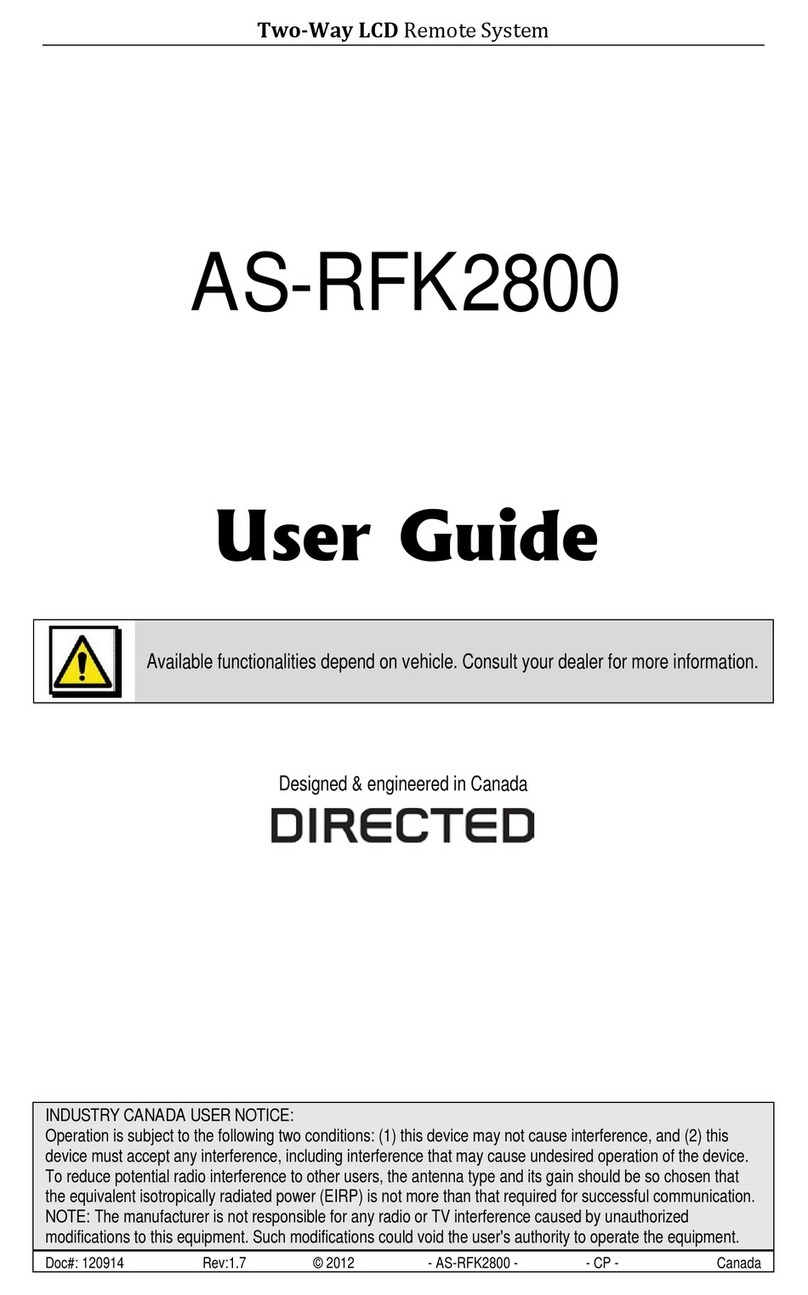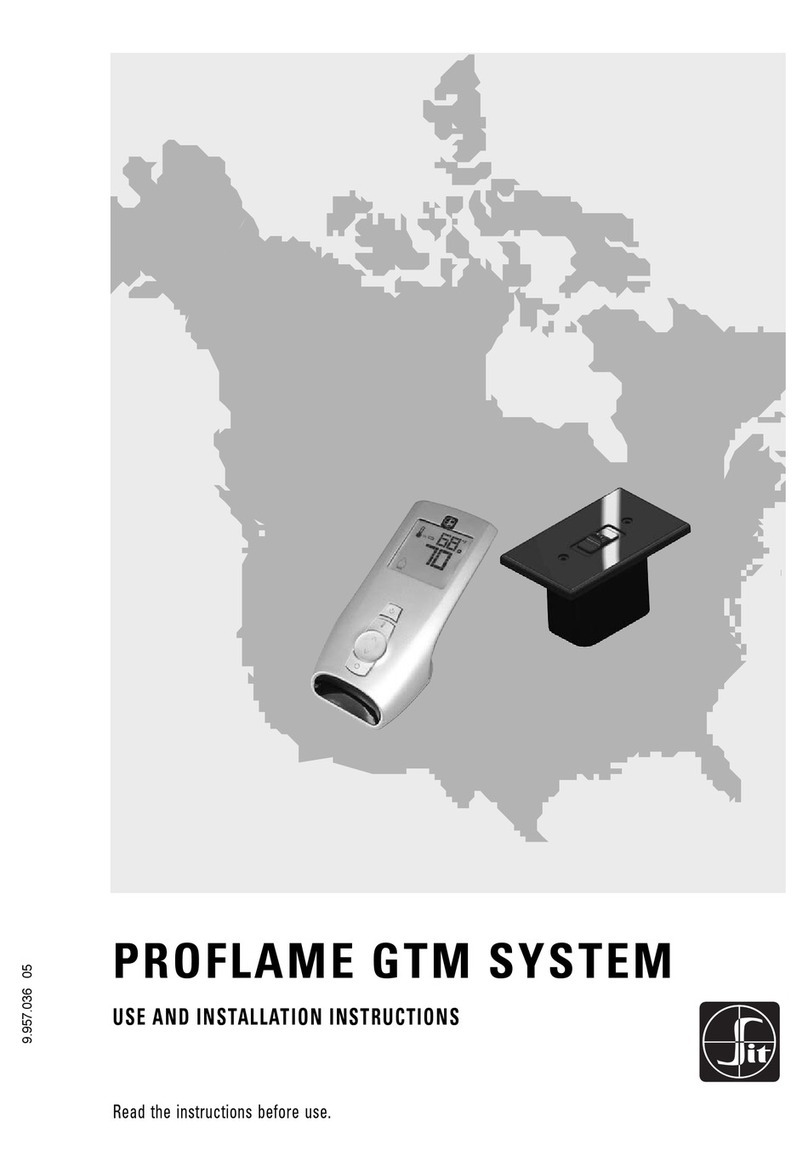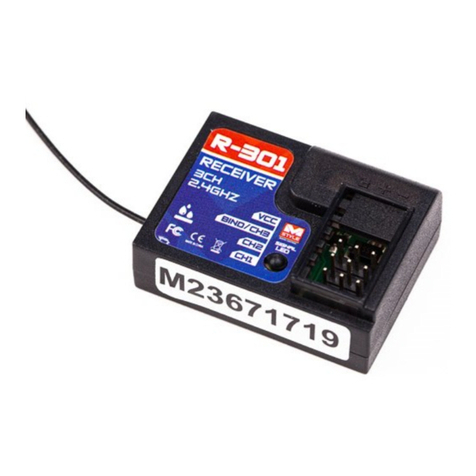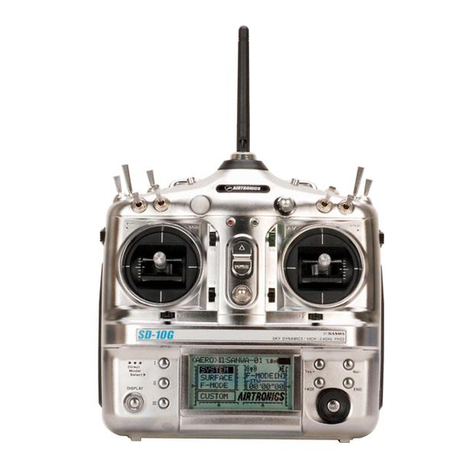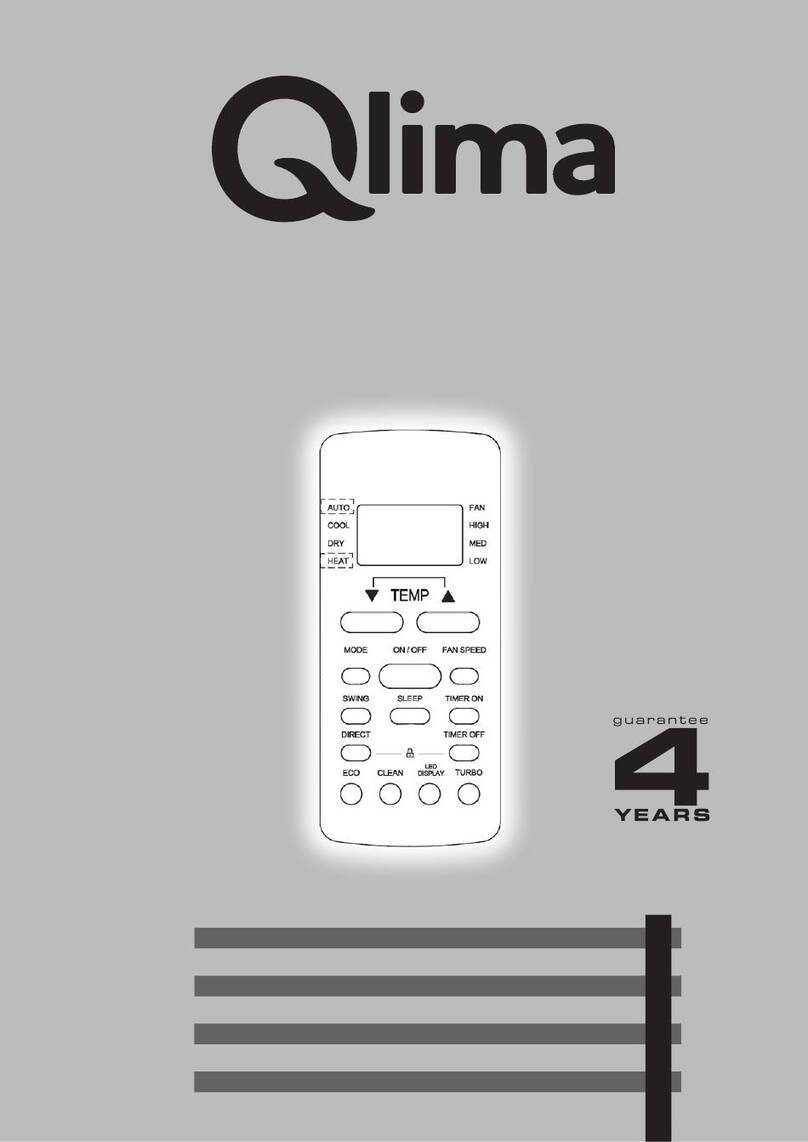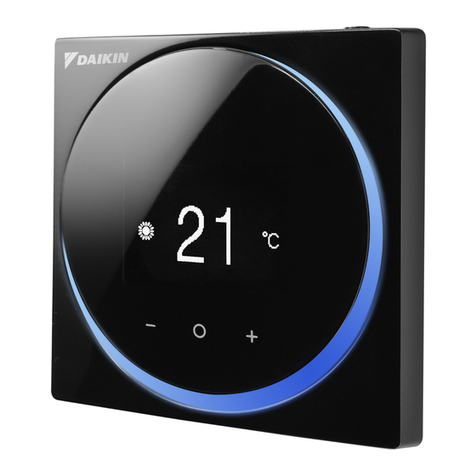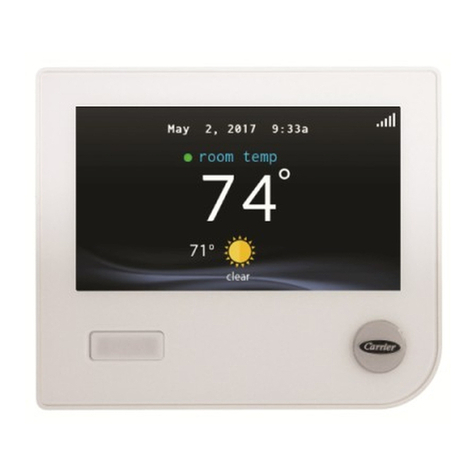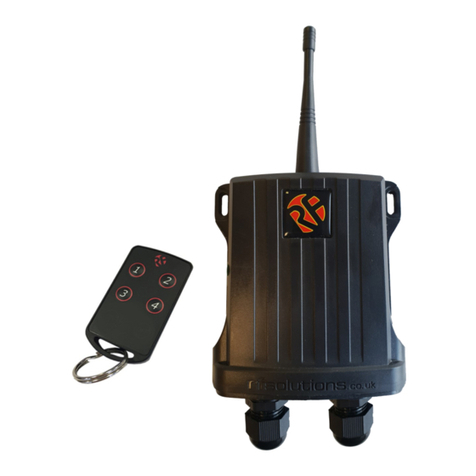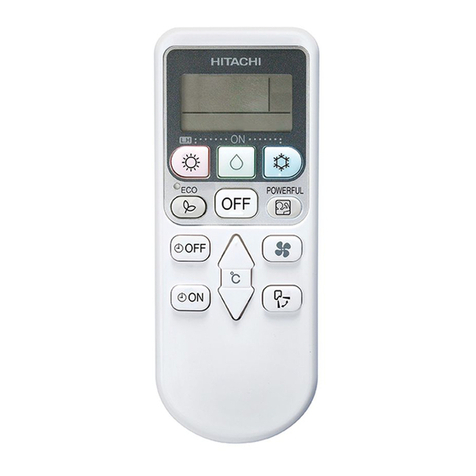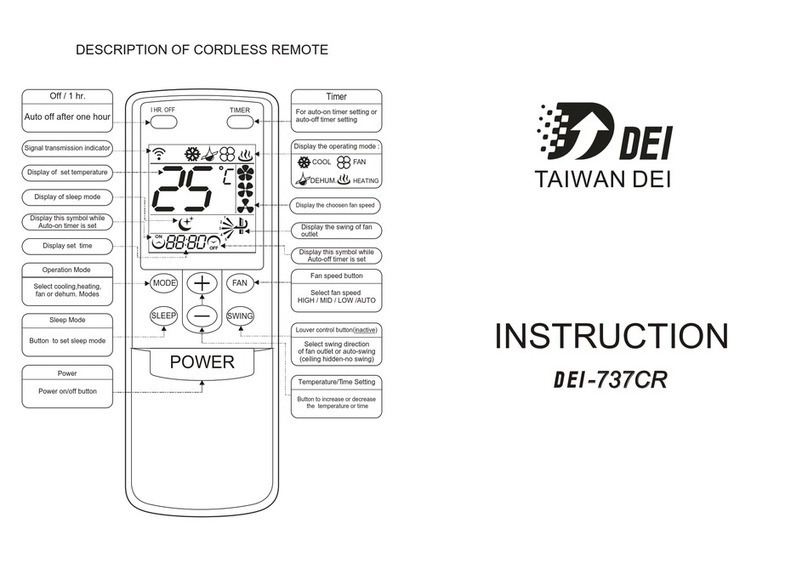MIKOM MOR701B Power User manual

User’s manual for Remote Unit MOR701B Power
M0069A0A.doc Id.-No 151154 Page 123-June-99
User’s manual for
band or channel selective Remote Unit
MOR701B Power
(Id.-Nos.: 147362/148669)
Author: Approved: QA:

User’s manual for Remote Unit MOR701B Power
M0069A0A.doc Id.-No 151154 Page 223-June-99
Table of Contents
LIST OF UNIT SPECIFIC ABBREVIATIONS 6
CONTENTS OF DELIVERY 9
HEALTH AND SAFETY WARNING 10
PREAMBLE 11
1INTRODUCTION 13
1.1 Intended purpose 13
1.2 About the MOR701B POWER 13
2FUNCTIONAL DESCRIPTION 14
2.1 General 15
2.2 RF modules 15
2.3 Mother board 17
2.4 Control module SM 2009 18
2.5 Duplexer 19
2.6 Active Combiner 20
2.7 Transceiver MFY1319 20
2.8 FSK modulator 21
2.9 4-way-Splitter 22
2.10 Measuring aids 22
2.11 Power supply 22
2.12 Feed forward amplifier 24

User’s manual for Remote Unit MOR701B Power
M0069A0A.doc Id.-No 151154 Page 323-June-99
3FUNCTIONS AND FEATURES 25
3.1 Band and channel selectivity 25
3.2 Gain setting 25
3.3 ALC 26
3.4 BITE and alarms 26
3.4.1 Handling of alarms 28
3.4.2 Status report 29
3.4.3 Severity levels 30
4OPTIONAL EQUIPMENT 32
4.1 VSWR module 32
4.2 External alarms 32
4.3 Battery backup module 34
5SPECIFICATION 36
5.1 Electrical specification 36
5.2 Optical specification 38
5.3 Mechanical specification 38
5.4 Environmental and safety 38
5.5 External electrical interfaces 39
5.5.1 Electrical power 39
5.5.2 RF connection 40
5.5.3 Optical connector 40
6INSTALLATION 41
6.1 Mechanical installation42
6.2 Electrical installation 45
6.2.1 Grounding 45
6.2.2 Power connection 46
6.2.3 Connection of the antenna cable 46
6.2.4 Connecting fibre optic cables 47

User’s manual for Remote Unit MOR701B Power
M0069A0A.doc Id.-No 151154 Page 423-June-99
7SETTING TO WORK 49
7.1 Preparation 49
7.2 Setting of operational parameters 50
7.2.1 Manual setting of the attenuation by means of rotary switches 50
7.2.2 Settings via personal computer as terminal 52
7.2.3 Remote control via Master Unit 54
8TROUBLE SHOOTING 55
8.1 Error indication 55
1.2 Boot process 55
1.3 Alarm monitoring with the STATUS HIST command 56
1.4 Power supply 56
1.5 General remarks 56
9MAINTENANCE 57
9.1 General 57
9.2 Replacement of the fuses (mains) 57
9.3 Replacement of the power supply fuse 58
9.4 Replacement of the mains cable 58
9.5 Replacement of the RAM / RTC battery 59
9.6 Replacement of the dummy battery backup module 60
9.7 Replacement of the duplexer 61
9.8 Replacement of RF modules 62
9.9 Replacement of the control module SM 2009 64
9.10 Replacement of power supplies 65
9.11 Replacement of Active Combiner modules 66
9.12 Replacement of feed forward amplifier 67
9.13 Replacement of the FSK modulator 69

User’s manual for Remote Unit MOR701B Power
M0069A0A.doc Id.-No 151154 Page 523-June-99
9.14 Replacement of the Transceiver MFY1319 69
10 SPARE PARTS LIST 70
11 CONFIGURATION LIST72
12 APPENDIX 73
12.1 Installation drawing of the Repeater 73
12.2 Top view of the Repeater (left-hand side , four channel configuration) 74
12.3 Top view of the Repeater (right-hand side, four channel configuration) 75
12.4 One channel configuration –block diagram and cabling 76
13 INDEX 78

User’s manual for Remote Unit MOR701B Power
M0069A0A.doc Id.-No 151154 Page 623-June-99
LIST OF FIGURES AND TABLES
table 1-1 List of international sales offices............................................................................12
figure 2-1 Block diagram of MOR701B Power.....................................................................14
figure 2-2 Top view of an RF module...................................................................................16
figure 2-3 Top view of a mother board.................................................................................17
figure 2-4 Top view of the control module............................................................................18
figure 2-5 Top view of the duplexer......................................................................................19
figure 2-6 Top view of an Active Combiner module.............................................................20
figure 2-7 Transceiver MFY1319 .........................................................................................20
figure 2-8 Installation position of the Transceiver.................................................................21
figure 2-9 Configuration of the connecting pins....................................................................21
figure 2-10 Top view of the 4-way-Splitter (Transceiver dismounted)..................................22
figure 2-11 Mounting position of power supplies..................................................................23
figure 2-12 ON / OFF position of external switch.................................................................24
figure 2-13 Top view of the feed forward amplifier ..............................................................24
figure 3-1 Position of rotary switches ...................................................................................25
figure 3-2 Position of failure LEDs.......................................................................................26
figure 3-3 Status hist report..................................................................................................27
table 3-4 List of all available alarms.....................................................................................28
figure 3-5 Example of a GET1 report...................................................................................29
figure 3-6 Example of a STATUS report..............................................................................30
figure 4-1 Clamps for external alarms...................................................................................32
figure 4-2 Cable configuration and installation position........................................................34
figure 4-3 Mounting position of batteries..............................................................................35
figure 5-1 Screw terminal for mains cable ............................................................................39
figure 5-2 Connector panel layout ........................................................................................40
figure 6-1 System description...............................................................................................41
figure 6-2 Wall mounting brackets .......................................................................................43
figure 6-3 Clearance distance................................................................................................44
figure 6-4 Grounding kit.......................................................................................................45
figure 6-5 Screw terminal.....................................................................................................46
table 7-1 LED indication ......................................................................................................49
figure 7-2 Position of the DIP-Switch 1................................................................................50
figure 7-3 Position of the rotary switches..............................................................................51
figure 7-4 Rotary switches and label.....................................................................................51
table 7-5 DIP-switch configuration.......................................................................................52
figure 7-6 DIP-switch 2 for local mode.................................................................................52
figure 9-1 Top view of the Repeater.....................................................................................57
figure 9-2 Fuse terminal .......................................................................................................58
figure 9-3 Position of power supply fuse...............................................................................58
figure 9-4 Position of RAM/RTC battery.............................................................................60
figure 9-5 Position of dummy battery backup module...........................................................61
figure 9-6 Cable configuration of the duplexers....................................................................61
figure 9-7 Connector panel layout ........................................................................................62
figure 9-8 Top view of an RF module...................................................................................63

User’s manual for Remote Unit MOR701B Power
M0069A0A.doc Id.-No 151154 Page 723-June-99
figure 9-9 Position of hex coded rotary switches...................................................................64
table 9-10 Address of synthesizer.........................................................................................64
figure 9-11 Position of control module .................................................................................65
figure 9-12 Power supply......................................................................................................65
figure 9-13 Position of special-nut M4..................................................................................66
figure 9-14 Position of counter sunk screws on Active Combiner.........................................67
figure 9-15 Position of the feed forward amplifier reset board..............................................68
figure 9-16 Position of feed forward amplifier (Right-hand side of Repeater).......................68
figure 9-17 FSK modulator...................................................................................................69
figure 9-18 Installation position............................................................................................69
table 10-1 Spare parts list .....................................................................................................71
figure 11-1 Sample of a configuration list.............................................................................72
figure 12-1 Installation drawing of the Repeater...................................................................73
figure 12-2 Top view of the Repeater (left-hand side, four channel configuration)................74
figure 12-3 Top view of the Repeater (right-hand side, four channel configuration)..............75
figure 12-4 Block diagram of one channel Repeater .............................................................76
figure 12-5 Cabling of one channel Repeater........................................................................77

User’s manual for Remote Unit MOR701B Power
M0069A0A.doc Id.-No 151154 Page 823-June-99
LIST OF UNIT SPECIFIC ABBREVIATIONS
ALC Automatic Level Control
BCCH Broadcast Control Channel
BITE Built In Test Equipment
BTS Base Transceiver Station
DL Downlink
ETS European Telecommunication Standard
FFwd Feed Forward Amplifier
FSK Frequency Shift Keying
Id.-No. Ident Number
I²C-Bus Inter Integrated Circuit Bus ( Philips )
LMT Local Maintenance Timeout
MFY MIKOM Transceiver
MOR MIKOM Optical Repeater
OMC Operation and Maintenance Centre
PABX Private Automatic Branch Exchange
PCMCIA Personal Computer Modem Communication International Association
PSTN Public Switched Telephone Network
Rev Revision
RF Radio Frequency
RLP Radio Link Protocol
RSSI Receive Signal Strength Indication
RTC Real Time Clock
SDA Serial Data Line of I²C-Bus
SCL Serial Clock Line of I²C-Bus
UL Uplink
UPS Uninterruptable Power Supply
VSWR Voltage Standing Wave Ratio

User’s manual for Remote Unit MOR701B Power
M0069A0A.doc Id.-No 151154 Page 923-June-99
CONTENTS OF DELIVERY
Qty 1Repeater MOR701B Power
Qty 1User’s manual for Repeater MOR701B Power
Qty 1Set of test protocols consisting of an electrical acceptance test protocol
and a safety test protocol applying to the power supply
Qty 1Spare parts kit containing:
- 1 control cable RS232,
- 1 hex socket key, size 2.5
- 1 Torx key
- 5 socket head cap screws M3.0 x 30
- 2 tallow-drop screws TRX M5.0x25
- 2 tallow-drop screws M2.0x6
- 2 tallow-drop screws M3.0x5
- 4 straight pins 3.0 x 25
- 3 captive washers for M5
- 4 Tyraps
- 3x5g Silicon heat conducting paste
- 1 hex socket screw key , size 4, long
- 4 nuts
- 2 fuses 8 A type MT
- 5 socket head cap screws M3.0x20
- 2 countersunk head screw M3.0x20
- 4 special nuts M4
Qty 1Wall mounting kit
- 2 mounting brackets
- 4 washers for M8
- 4 socket head cap screws M8.0x16
- 2 tire bolts
Qty 1Wall mounting sheet

User’s manual for Remote Unit MOR701B Power
M0069A0A.doc Id.-No 151154 Page 10 23-June-99
HEALTH AND SAFETY WARNINGS
FNote: The electrical installation has to be performed in accordance with the safety
regulations of the local authorities. Due to safety reasons the electrical
installation must be performed by qualified personnel. The cover of this unit
should not be opened while power is applied. Subsequent installation,
commissioning and maintenance activities that require the unit to be
powered with the cover open shall only be carried out by suitably qualified
personnel.
FNote: The grounding of the Unit has to be performed by all means. A grounding
bolt is provided at the cabinet in order to connect the earth bonding cable.
F
Note: The Unit is heavy-weight. Make sure that a suitable mounting surface is
used. Only adequate manpower is allowed to handle the system.
F
Note: ESD precautions have to be observed! Before maintenance work use the
available grounding system to connect ESD protection measures.
F
Note: Due to power dissipation the Repeater may heat up the air volume inside the
cabinet and reach a very high temperature. Therefore the Repeater must be
mounted in the vertical plane to a wall or a mast without additional
enclosure to provide sufficient ventilation. Between the housing and the wall
a minimum distance must be kept in order to provide air circulation.
F
Note: Laser radiation! Do not stare into the beam or view directly with optical
instruments. Class 3A laser product.

User’s manual for Remote Unit MOR701B Power
M0069A0A.doc Id.-No 151154 Page 11 23-June-99
PREAMBLE
In cellular systems, Repeaters are used to enhance the influence of a base station in regions
where, due to topological conditions, poor field strengths disable communication. MIKOM is
a leading manufacturer of Repeaters. They provide excellent electrical characteristics, they are
light-weight and easy to install. Hence, the MIKOM Repeater is the preferred solution.
Your Repeater has been built using high reliable materials. A comprehensive quality
assurance has been applied to all fabrication steps. This secures constant quality of the
product. Every Repeater leaves the factory only after a thorough final acceptance test,
accompanied by a test certificate, which warrants perfect function. The acceptance test
certificate is subject of the delivery, and it is fixed to the Repeater lid in order to provide a
quick reference for the user.
Any intervention has to be performed by authorized persons only. If you need technical
assistance with the Repeater MOR701B Power approach your local sales office (see table 1-1
List of international sales offices) or MIKOM directly at the following address:
Under consideration of all references given in this manual, the Repeater should be taken into
service without any complications and should operate trouble-free for a long time.
MIKOM GmbH
Industriering 10
86675 Buchdorf
Germany
Tel: +49 (0) 9099 6 90
Fax: +49 (0) 9099 69 31
email: [email protected]
http://www.mikom.com

User’s manual for Remote Unit MOR701B Power
M0069A0A.doc Id.-No 151154 Page 12 23-June-99
LIST OF INTERNATIONAL SALES OFFICES
Allen Telecom Allen Telecom (Australia)
P/L Forem France
30500 Bruce Industrial Parkway PO Box 903 Z.I. des Ebisoires
Cleveland, Ohio 44 139-3996 Bankstown NSW 2200 78370 Plaisir
USA Australia France
Phone: +1 ( 216 ) 349-8657 Phone: +61 ( 2 ) 9793-9644 Phone: +33-1-30-79-15-30
FAX: +1 ( 216 ) 349-8408 FAX: +61 ( 2 ) 9793-9747 FAX: +33-1-30-55-55-37
FOREM S.p.A. AT Singapore AT China
Via Archimede N. 22/24 80 Marine Parade Road CITIC Building, # 11-05
20041, Agrate Brianza #19-1 Parkway Parade 19 Jiangguomenwai Avenue
Milan Singapore 449269 Beijing
Italy China 100004
Phone: +39-39-605-41 Phone: +65-345-8022 Phone: +86-10-6508-3088
FAX: +39-39-605-4477 FAX: +65-345-8033 FAX: +86-10-6508-3066
AT Canada FOREM UK AT Hong Kong
1815 Ironstone Manor, # 12 Unit D
Castle Industrial Park 1603 Remington Certer,
23 Hung to road,
Pickering, Ontario L1W 3W9
Canada Pear Tree Lane
Newbury, Berkshire Kwun Tong, Kow Loon
Hong Kong
U.K. RG 14 2EZ
Phone: +1 ( 905 ) 839-3474 Phone: +44-1635-569-695 Phone: +852-2389-1844
FAX: +1 ( 905 ) 839-4663 FAX: +44-1635-569-463 FAX: +852-2389-4864
AT India
B-256 Ground Floor.
Chittaranjan Park
New Delhi 110019
Phone: +91-11-696-3918
FAX: +91-11-652-1648
table 1-1List of international sales offices

User’s manual for Remote Unit MOR701B Power
M0069A0A.doc Id.-No 151154 Page 13 23-June-99
1Introduction
1.1 Intended purpose
Cellular telephone systems transmit signals in two directions between base stations and
mobile telephones within the signal coverage area.
If weak signal transmissions occur within the coverage area because of indoor applications,
topological conditions or distance from the transmitter, a Repeater is used to extend
transmission range. In the downlink path the Repeater picks up the signal from a donor
antenna of an existing cell, amplifies and re-transmits it into the desired dark spot. In the
uplink direction the Repeater receives signals from mobile stations present in its coverage
area and re-transmits them to the corresponding base station.
1.2 About the MOR701B POWER
MIKOM’s MOR701B Power Remote is available as a band selective optical repeater for
GSM, CDMA and TDMA technology and as a channel selective optical repeater for CDMA
and TDMA technology.
A GSM channel selective version is available (MOR 740).
The MOR701B Power Remote repeater bi-directionally amplifies signals between multiple
mobiles and a single base station in the PCS1900 frequency band using optical fibres for
interconnection to a Master Unit. It is employed mainly in tunnels, canyons, and other areas
where physical structures cause weak field strengths. It can provide highly selective
amplification of band segments or channels in the PCS1900 band.
The MOR701B Power Remote can be combined with other repeaters in order to create a
multi-band optical repeater system. Modules operating in GSM1800, GSM900, AMPS800, or
iDEN bands are available. When different modules are combined a common antenna and
control interface is available.
The MR701 Power Remote can be set-up locally at the Master Unit through the optical fibre
or remotely at the OMC. A PCMCIA slot for modem operation is an available option at the
Master Unit. The repeater has a large number of functions that can be monitored and changed
by the operators via a terminal emulation program or the MIKOM OMC software platform.
An easy to understand and simple to learn communication language is available to help the
operator query status reports from the repeater or to change settings.

User’s manual for Remote Unit MOR701B Power
M0069A0A.doc Id.-No 151154 Page 14 23-June-99
2Functional description
The Repeater MOR701B Power can be equipped from one to four bands or channels.
The following block diagram shall illustrate the configuration of the system.
*: one physical module contains UL and DL
**:with more than two channels, the amplifier is included
*** For correct cabling see Assembly Guide
figure 2-1Block diagram of MOR701B Power

User’s manual for Remote Unit MOR701B Power
M0069A0A.doc Id.-No 151154 Page 15 23-June-99
2.1 General
The Repeater consists of two amplifier chains. The signals to and from the mobiles are
combined to an antenna by a frequency separation unit, denominated in the following as
Duplexer. The optical signals to and from the Master Unit are converted by the Optical
Transceiver.
In the Downlink direction the optical signals from the Master Unit are converted into RF-
signals by the Transceiver (see chapter 2.7). They pass the 4-way-Splitter (see chapter2.9),
which provides the RF-signal for the RF modules. After the RF module (see chapter 2.2) they
are combined by the Active Combiner (see chapter 2.6) and afterwards amplified by the Feed
Forward Amplifier (see chapter 2.12), which provides the required output power. Finally the
signals are fed to the antenna by the Duplexer (see chapter 2.5).
In the Uplink direction the signals from the mobiles are seperated by the Duplexer, get to a
Pre-Amplifier and afterwards to an RF module. The signals are combined by the Active
Combiner then, get converted into optical signals by the Transceiver (see chapter 2.7) and are
finally transmitted to the Master Unit.
In the final amplifier of the Downlink a power detection measures the output power and
controls the gain. In the Uplink the gain is controlled by the Active Combiner to protect the
Optical Transceiver. This power detection is called Automatic Level Control (ALC) (see
chapter 3.3).
2.2 RF modules
The task of the RF modules is to amplify the receive signals and to convert them into an
intermediate frequency. The signals, then, proceed a filter stage comprising of highly selective
filters, and run through a digital controllable attenuator. The attenuation can be set in steps of
2 dB, locally or remotely. By using the same synthesizer frequency, that was used to convert
the signals down to intermediate frequency, the intermediate frequency is mixed up to the
original frequency.
The synthesizer is controlled via an I²C-Bus. In case of a breakdown in mains, gain and
frequency data are non-volatile stored in an EEPROM on board.
See figure 2-2Top view of an RF module for an exemplary channel or band module.

User’s manual for Remote Unit MOR701B Power
M0069A0A.doc Id.-No 151154 Page 16 23-June-99
figure 2-2Top view of an RF module

User’s manual for Remote Unit MOR701B Power
M0069A0A.doc Id.-No 151154 Page 17 23-June-99
2.3 Mother board
The function of the mother board is the communication between the RF modules and the
control module via the I²C-Bus.
In the three and four channel configuration of the Repeater there is a mother board on the left-
and on the right-hand side, whereas in the one and two channel configuration there is only one
mother board implemented on the right-hand side of the Repeater.
Mother boards are located underneath the RF modules.
figure 2-3Top view of a mother board

User’s manual for Remote Unit MOR701B Power
M0069A0A.doc Id.-No 151154 Page 18 23-June-99
2.4 Control module SM 2009
The control module SM 2009 is a DOS compatible micro computer. The whole
communication between the operator and the Repeater can be done via the control module. By
using the RS232 interface the Repeater can be controlled locally by using a VT100 terminal,
or a PC emulating the VT100 terminal.
Frequency and gain, power down of RF stages and ALC can be controlled and status
messages can be received remotely via the Master Unit.
The data transfer between the control module SM 2009 and the mother board is realized by
the I²C-Bus system.
The I²C-Bus concept was developed by Philips for the serial connection of integrated circuits
within one device. Two wires, SDA - serial data and SCL - serial clock, carry data between
the devices connected to the bus. Each device is recognized by a unique address and can
operate either as transmitter or receiver.
All MOR701B Power configuration parameters are stored in an EEPROM on the control
module if a power supply failure occurs.
figure 2-4Top view of the control module

User’s manual for Remote Unit MOR701B Power
M0069A0A.doc Id.-No 151154 Page 19 23-June-99
2.5 Duplexer
The task of the duplexer is to isolate uplink from downlink, i.e. isolate transmit path from
receive path. The pass bandwidth of the duplexer is the entire width of the uplink band and
the downlink band.
Two frequency - dependent versions of the MOR701B Power are available:
Id - No UL frequency DL frequency
147362 1850 - 1885 MHz 1930 - 1965 MHz
148669 1875 - 1910 MHz 1955 - 1990 MHz
figure 2-5Top view of the duplexer
RF probe
30 dB
Duplexer

User’s manual for Remote Unit MOR701B Power
M0069A0A.doc Id.-No 151154 Page 20 23-June-99
2.6 Active Combiner
After passing through the RF modules, the signals will be combined by the Active Combiner
module in the UL and in the DL path. The Active Combiner will be followed by the feed
forward amplifier in the DL and by the Transceiver in the UL.
figure 2-6Top view of an Active Combiner module
2.7 Transceiver MFY1319
The Transceiver MFY1319 is the interface between the optic and the electrical distribution
unit. The function of the Transceiver is to convert the optical signal into an electrical signal
and vice versa.
figure 2-7Transceiver MFY1319
This manual suits for next models
2
Table of contents
